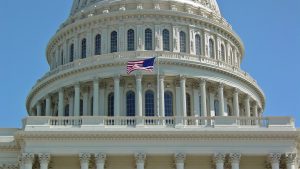The inauguration of Joe Biden and the end of Donald Trump’s presidency has occupied much of the world’s attention this week, along with the enormous challenges the new administration faces immediately. But the administration is not the only relevant part of the federal government; with a new, albeit precarious, balance of power in Congress, there is an opportunity to remake the legislature to be better prepared for the technological challenges the U.S. faces.
Starting in 1972, the U.S. Congress had a support agency working with it on issues related to science and technology: the Office of Technology Assessment (OTA). OTA’s mission was broader than just giving advice on emerging technology; it also served to help Congress write laws that were worded in ways consistent with the best available scientific understandings and technological possibilities.
In 1995, OTA was defunded by the newly-elected Republican Congress, which viewed the office’s analysis as biased against their agenda. The years have not been kind to that decision: In recent years, when members of Congress have tried to engage in public hearings with complex technological issues as part of their regulatory and oversight function, their questions have been widely derided as grandstanding, poorly-informed or otherwise not fit for purpose.
This is a hugely significant problem. The proliferation of information and communications technology to virtually every member of society is a boon in many respects, but it also opens attack surfaces from the individual to the structural level. While the precise effectiveness of social media-based disinformation campaigns is subject to dispute, near-universal connectivity does provide leverage for malign actors, state-based or otherwise, to interfere in the normal functioning of society. More significant are the threats emerging from structural changes: job losses to automation, climatic collapse, and a wholesale redefinition downwards of the individual right to privacy, for example. For those who believe that the structural challenges are less important than the balance of power issues, the decline in the American technological edge relative to China and other rivals might be more of a concern. But having a better basis of understanding what technological threats are emerging ought to be a point of consensus between those camps.
It is not within the gift of the executive branch alone to protect against these threats; Congress must legislate, appropriate and oversee wisely to make that protection feasible and sustainable. But without a trusted authority on technological matters, Congress’s ability to do so is highly limited. Members of Congress are free to seek and receive briefings from external experts, but there is no oversight or consistency in the quality of those briefings.
This points to a fundamental problem that a revived OTA cannot, by itself, solve. Congress cannot effectively legislate when it cannot agree on basic elements of reality. There is a broader problem here – partisanship and polarization, after all, are hardly unique to the United States – but there are specific elements that mark the U.S. as an outlier. On climate change, for example, the Republican Party is not only out of step with the scientific consensus, but with equivalent center-right parties worldwide. And the problem is getting worse; climate change deniers are not aging out or being defeated; rather they are being joined by proponents of the utterly baseless QAnon conspiracy theory.
It is too easy and glib to demand “science-based” policy – there is no single, unquestionable scientific judgment; translating the best understanding of the scientific community into outcomes requires policy tradeoffs which are inherently value-laden and political. But there are issues on which science is largely settled and can form the basis of a rational debate: how to best manage the impact of climate change, for example, is a debate fit for a national legislature. Debating whether climate change is happening is not.
A revived OTA will not convince conspiracy theorists and those who have profited politically or financially from denial to engage in fact-based, good faith debate. But the American system is based on checks and balances. The executive branch has an OTA equivalent called the Office of Science and Technology Policy, which survived the 1995 cuts and exists to this day – though it, along with much of the professional civil service, was badly hollowed out during the Trump administration time in office. Biden has vowed to revive it, and has made several appointments already suggesting that his administration will make a more serious effort to understand the challenges posed by technology and the possibilities and limitations of technological solutions – but that is no guarantee against a future Trump-like administration gutting it once again. But a separate agency, funded by and answerable to Congress, could provide a hedge against that possibility. It is a hedge well worth investing in while the opportunity exists.

































